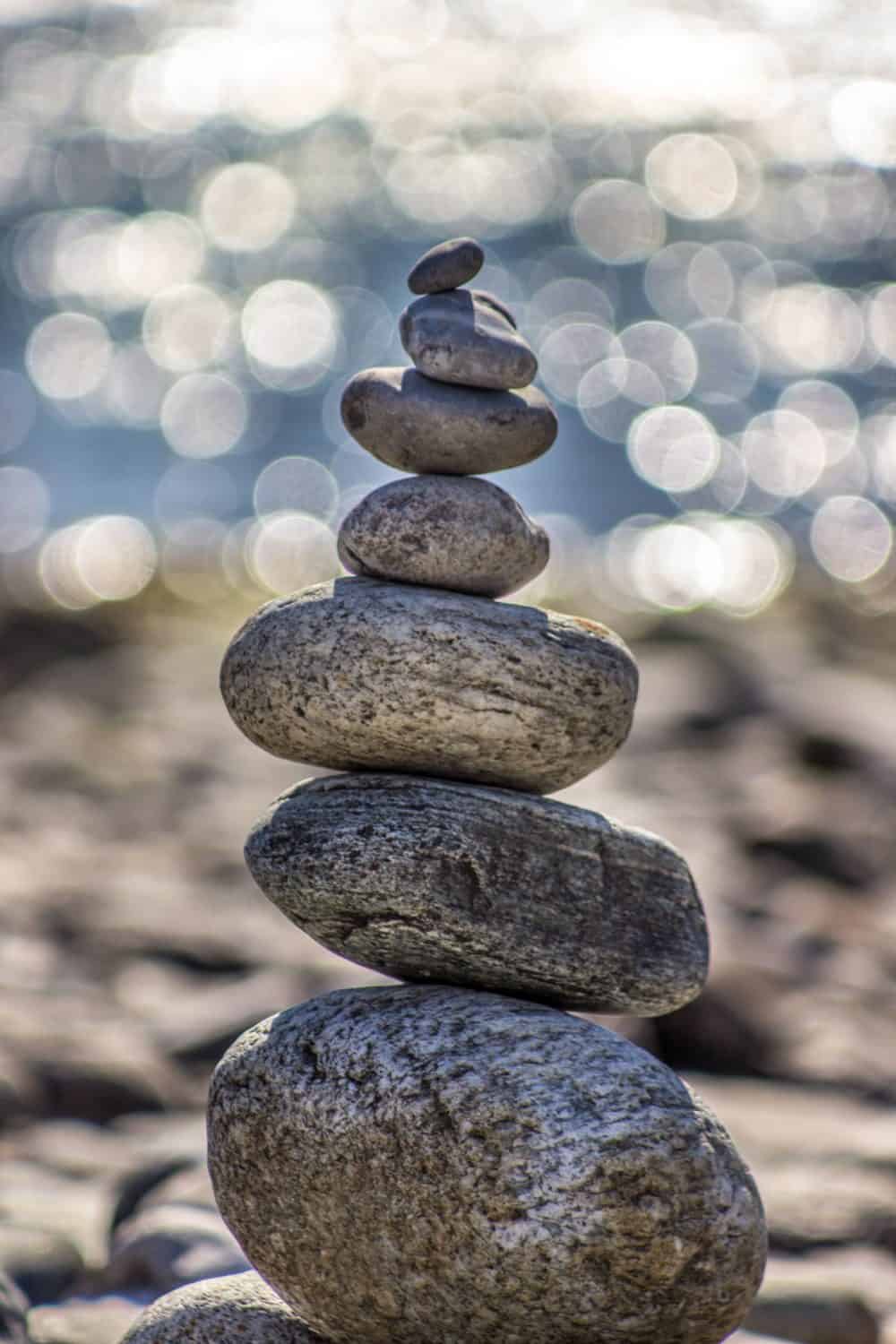
Religion, Art and Imperfection
The poem is called “Hey, God.” Ugh. My mom is religious. I am not.
Religion is a funny thing. It draws such strong opinion and reaction from people, no matter their belief. Personally, religion turns me off. Self-serving use of Biblical text, and religious hypocrisy in general were the foundations of my non-belief, but I can’t say I ever really “believed” in the first place. I was raised in a traditionally Christian family, the more modest form of Christianity found in Midwestern protestant churches-rather than stalwart Catholic or hand-waving “non-denominational” evangelist types, although both of those variations can be found in my extended family.
Church was just something that everyone did. You went to school during the week, Saturday mornings were for cartoons, and on Sunday you got dressed up and went to church. People who’d known you since you were born would pat you on the head and tell your parents how fast you were growing, you tried not to kick you feet under the pew too much, or kick your brother for that matter, stood when you were supposed to, sang when it was time, and memorized “Our Father, who art in Heaven, Hallowed be thy name…” even though you had no idea what that meant.
And hopefully the sermon wouldn’t be too long, and there would be cookies at the end.

My parents are still religious, but I have since removed the title of “Christian” from my identity. I just never identified with it. although there was something comforting about being part of a church community, the social skills that children learn as a result of having to mind their manners as well as their elders, and the buildings themselves are gorgeous, and offer a feeling of peaceful protection; serenity.
And it’s not that I have any sort of an issue with Jesus. To quote the Doobie Brothers, “Jesus is just alright with me.”
I’ve had people ask me, “You mean you don’t believe in Jesus?” That’s like saying I don’t believe in Abraham Lincoln. Of course, I believe that Jesus existed, I believe he was a very good person who suffered greatly to bring attention to the plight of the poor and the needy, and to teach us all to love and care for one another. But do I believe that he is the son of God, borne of a virgin and that he died so that I would be forgiven of all my sins? No. Is he my “savior?” No. Do I respect what he taught? Yes. Do I teach my children these same ideals? Yes. Not because of any sort of a guilt, or because I’m afraid of burning in hell, but because they make sense.

So I’m not a Christian, but I’m not quite an Atheist either. I do believe in the flow of universal energy, and that we are all connected. I feel a stronger relationship to things like the grass under my feet; birds singing in my backyard; sun filtered through tree leaves; the coming of a storm; or the tide pulling sand away from my toes. A forest is my cathedral and the wind is the day’s sermon. That, to me, is God-if that’s what you want to call it. One of my favorite quotes is from Frank Lloyd Wright: “I believe in God, only I spell it Nature.”
That pretty much sums it up for me.
But, I respect the rights for others to believe what they choose. And while I groaned at first read of my mom’s poem, I immediately saw the images in my mind to illustrate it. And I considered it a challenge for me to get down off my secular high horse and give a tiny little something back to the woman who has given so much to me.
Art has always had a place in my life. A creative person by nature, I consider myself artistic, but never became proficient enough at any one medium to comfortably call my self an artist. As my dad would say-in art, as well as every other aspect of my life-I am a “Jack of all trades, Master of none.” Which means, when the toilet is running, I am the type of person to figure out how to fix it, rather than call in the pros. When I see a purse I like with a $200.00 price tag, I go home and figure out how to make one for 20 bucks. And although I don’t have any high level of training (in anything, much less art), when my mom asks me to illustrate a poem for her, I break out my box of colored pencils and give it a go.

I have a gadget on my Google homepage called “Art of the Day,” which, every time the page is refreshed, shows a new piece of art. I love it. One of the few classes in college that I enjoyed enough for it to have made a lasting impression was Art History. In 1990, I was lucky enough to visit The Louvre, in Paris, and view masterpieces from Winged Victory to the Mona Lisa. Seeing these great classic works of art up close, the ancient smooth marble, brushstrokes 500 years old; it’s a connection of some sort. A human connection.

Winged Victory used with permission © Ron Wilson
An artist, however amateur, sees himself in artwork. Feels a brotherhood with the hands that created something so beautiful, because the connection to all art is love. One cannot create a thing of beauty without love for that thing.
And as I lovingly drew my little four-panel piece for my mom, stalwart in my belief of being a non-believer, an ironic realization came to my mind: many of the great works of art over the centuries of humanity were either an homage to the Creator (pre Christian or indigenous), or commissioned by the Church, as with Leonardo Da Vinci, Michelangelo, and other Renaissance painters and sculptors.

Was every great work of art made in praise of God? Or were the artists producing a piece for the love of the act of creation itself? Who’s to say? Can art be made purely for the love of art, no matter its message or intended audience? These are the questions that rolled through my mind as I put pencil to paper.
How could I respectfully portray the heartfelt feelings toward God in my mom’s poem, yet stay true to my own feelings? I combined my love of Nature and the elements with my mom’s love of God and creation.
As the narrator speaks with God about being created, the panels illustrate a seed being planted, then nurtured into growth. At further inspection, the viewer will see the full life cycle represented: not only is this one seed emerging into life, but one of its companions has already reached its peak and another is close behind.

This represents the stages of a woman’s life, mirrored by the phases of the moon:
- the bud; the waxing moon; the maiden (innocence & growth)
- the bloom; the full moon; the mother (full of life & life-giver)
- the blossom gone to seed; the waning moon; the crone (end of life & passing wisdom to successors)
I addition, each of the four panels embodies the elements: earth, air, water, and fire, as shown in each panel’s border design. The number four also is significant in the four directions of the compass, and the four seasons of the year.

But what makes great art great? In the case of Leonardo da Vinci, maybe the greatness lies in his pure perfection of form. Arguably the most famous work of art known to man, the Mona Lisa, shows nary a brushstroke on her porcelain skin. But the cracks and patina of age give the piece a feeling of presence; of reality.
Does true beauty lie not in perfection, but in our flaws?
To see a photograph of a famous work of art is much different than viewing it up close. In a photograph, you see simply the image, unblemished, and it looks perfect. Up close, you see the humanity held within, the mark of the maker, the evidence of man. It humbles the piece, the artist, and the viewer. It reminds us that we are all the same, no matter our class, age, ethnicity, or beliefs: flawed, mortal, and perfectly imperfect.

And in this image, if you look closely you can see another imperfection – a ring left from my coffee cup absentmindedly set upon my artwork. I wonder if da Vinci ever did that?
“Hey God” By Nancy Hallock


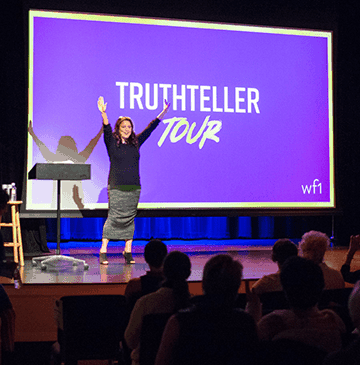




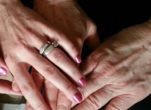
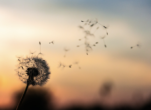
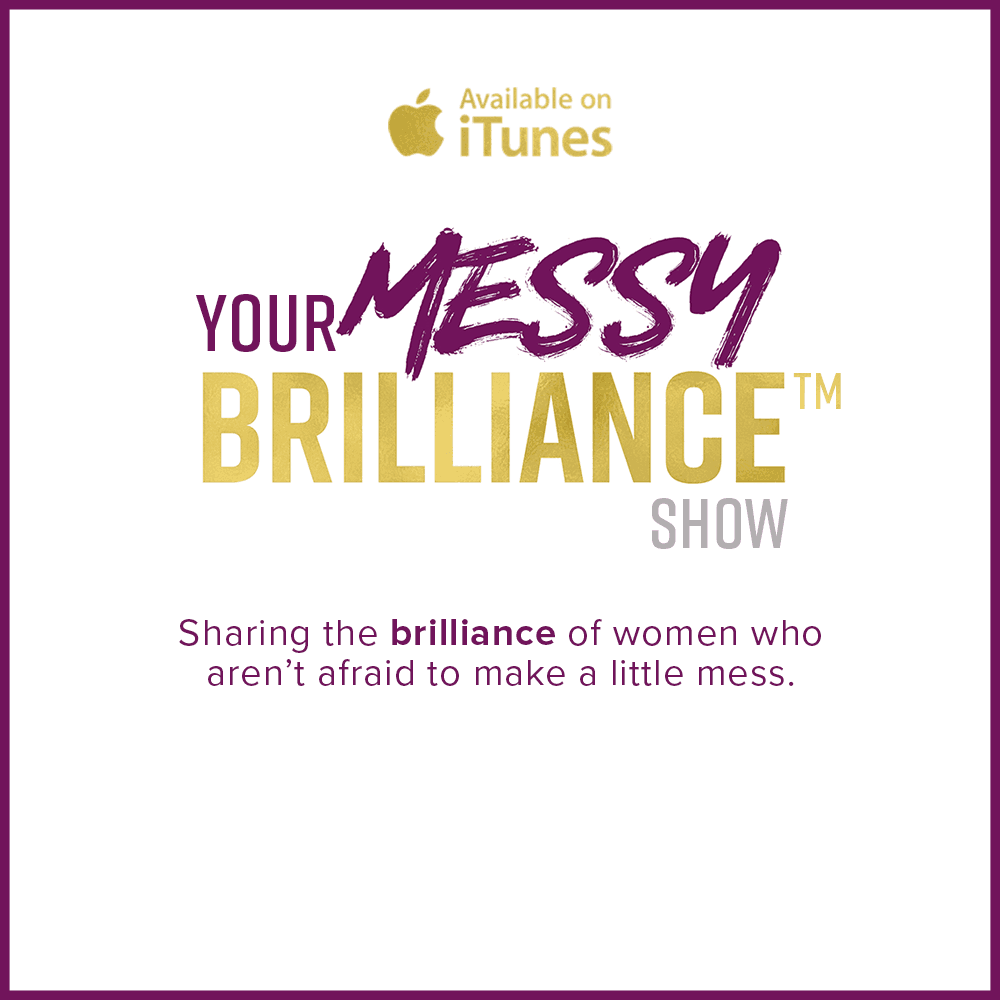

4 comments to "Religion, Art and Imperfection"